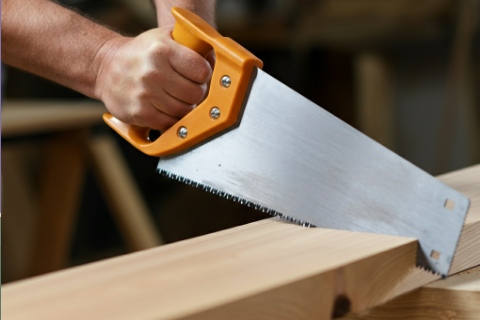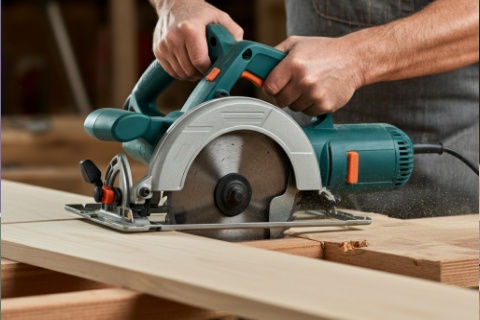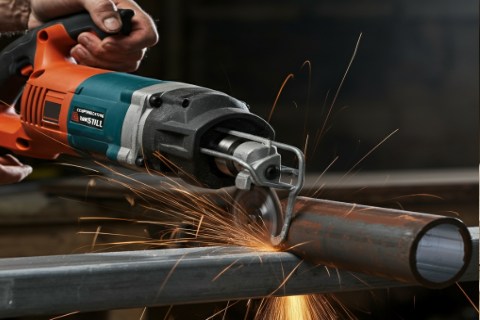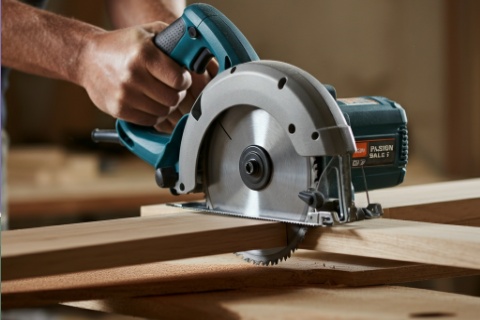Selecting the right tools can make or break your experience when tackling a woodworking or home improvement project. Among the most frequently debated tools are saws. Whether cutting wood, metal, or plastic, the type of saw you choose will significantly impact how quickly and efficiently you can complete the task.
But which saw cuts faster? This blog compares various saw types, breaks down key factors influencing cutting speed, and helps you determine the best choice for your project.
Why Saw Type Matters
Not all saws are created equal, and that’s okay! Every type of saw is designed with specific tasks, from precision cuts in detailed woodworking to rough cuts in large-scale construction. A saw’s speed often depends on the cut material, the blade teeth per inch (TPI), and the power source (manual vs. powered).
Here, we’ll focus on the most commonly used saws for DIY projects and how they rank in cutting speed.
Comparing Saw Types

Hand Saw
Hand saws are the most straightforward, most traditional cutting tools available. They’re affordable, easy to use, and don’t need an external power source.
Speed: While hand saws can be effective, they tend to be slower than their powered counterparts. The speed relies heavily on your physical effort and cutting technique. While it’s great for softer woods or small-scale cuts, it’s not ideal for large or time-sensitive projects.
Best Use Cases:
Small woodworking jobs
Cutting softwoods or thin boards
Woodworking enthusiasts who enjoy manual crafting
Quick Tip: For faster cuts, opt for a coarse blade (lower TPI) on a hand saw, but remember that this will sacrifice precision.
Circular Saw
Many DIYers use circular saws because of their versatility and efficiency. These saws are powered by electricity and have a rotating disc blade capable of cutting through various materials quickly.
Speed: Circular saws are considerably faster than hand saws, making them ideal for more extensive or intensive projects. Once set up correctly, they can slice through thick boards in seconds.
Best Use Cases:

Cutting straight through plywood or other sheet materials
Projects requiring fast, straight cuts
Home improvement tasks such as trimming doors
Quick Tip: To maintain speed and accuracy, use a blade specialized for your material (e.g., wood metal).
Jigsaw
Jigsaws are highly versatile saws used for cutting curves and intricate designs. They’re powered tools that allow the user to guide the blade precisely, making them excellent for custom shapes.
Speed: Although jigsaws are powerful, they aren’t the fastest option. They trade raw speed for precision and flexibility.
Best Use Cases:
Cutting irregular shapes or curves
Delicate woodworking projects
Adjusting laminate countertops or similar materials
Quick Tip: Adjust the blade speed and choose the right blade type for your material—a smaller TPI will cut faster but isn’t suitable for fine details.
Reciprocating Saw

Reciprocating saws, often called “walls,” are power tools with blades that move back and forth rapidly. These tools are excellent for demolition or rough cutting, where speed is a priority over precision.
Speed: Reciprocating saws are high-speed, especially for heavy-duty tasks like cutting pipelines, nails, or large metal sections. However, their cuts are less clean or precise than other saw types.
Best Use Cases:
Demolition projects
Cutting through nails, pipes, or drywall
Tasks where perfection isn’t required
Quick Tip: Always wear safety gloves when using a reciprocating saw, significantly when quickly cutting irregular or rugged materials.
Table Saw
A table saw is a staple for serious woodworkers and DIYers working on large-scale projects. It has a circular blade mounted to a table and offers precise and fast cutting.
Speed: The table saw is hard to beat when cutting wood quickly and precisely. It’s the fastest saw for straight cuts on large boards or sheets of lumber.
Best Use Cases:
Rapid straight cuts on large pieces
Precise, consistent results for carpentry projects
Workshop setups that require heavy-duty use
Quick Tip: Always ensure you’re using the correct blade guard and follow safety procedures when using a table saw—it’s a powerful tool that requires care.
Chainsaw
The chainsaw is your go-to tool if you work outdoors and must cut thick logs or branches. It’s designed for heavy-duty applications, not precision.
Speed: A chainsaw is one of the fastest saws available for cutting wood. It’s unsuitable for detailed carpentry but can effortlessly cut through thick, solid material.
Best Use Cases:
Tree cutting and landscaping
Breaking down large logs
Outdoor, rough woodcutting tasks
Quick Tip: Keep your chain sharp for optimal speed and performance, and follow proper safety guidelines when using a chainsaw.
Key Factors That Affect Cutting Speed
Now that you know the saw options available, it’s worth noting three key factors that influence how quickly any saw can cut through the material:
Teeth Per Inch (TPI): Blades with lower TPI cut faster but less precisely, making them ideal for rougher cuts. High TPI blades produce smoother cuts but are slower.
Material Being Cut: Softer materials like pine wood will cut faster than hardwood or metal. Always choose a saw designed for the specific material you’re working with.
Blade Maintenance: A dull blade significantly slows down cutting speed, whether the saw is manual or powered. Regular maintenance or replacement blades can help maintain efficiency.
Which Saw Should You Choose for Speed?
If cutting speed is your priority, opt for a reciprocating saw for demolition projects or a circular one for quick, straight cuts. However, if you prioritize precision and ease of use, a table saw may be the better choice for your project.
Wrap It Up – The Right Tool for Every Job
Choosing the right saw isn’t just about speed—it’s about finding the best tool for the job. Whether crafting intricate furniture or breaking down heavy wood, your choice of saw impacts both results and efficiency.
Not sure where to start? Invest in versatile tools like a circular saw or jigsaw for your toolkit, and expand as your projects grow.
Now’s the time to pick up that saw and start your next project! Please share your favorite sewing tips and tools in the comments below to help inspire our woodworking community.
Frequently Asked Questions
1. What type of saw is best for beginners?
A jigsaw or a circular saw is often recommended for beginners due to their versatility and ease of use. These tools allow users to handle a variety of cuts without requiring advanced skills.
2. How often should I replace saw blades?
Blade replacement frequency depends on how frequently you use the saw and the materials you’re cutting. A good rule of thumb is to replace the blade when you notice it becoming dull, causing slower cuts, or creating rough edges on your materials.
3. Can the same saw blade be used for all materials?
Not all blades are designed for all materials. For woodworking, stick to blades labeled for wood. If you’re cutting metal, plastic, or other materials, use a blade specifically designed for those applications to ensure clean cuts and protect your saw.
4. How do I maintain my saw for lasting performance?
Regular cleaning of the blade and tool, proper storage, and occasional lubrication of moving parts are essential to maintaining your saw. Also, ensure you sharpen or replace blades to keep the tool working efficiently.
5. What safety measures should I take while using saws?
Always wear safety goggles, gloves, and hearing protection if necessary. Ensure the saw’s stability before cutting, and keep your hands away from the blade. Reading and following the manufacturer’s safety instructions is also crucial.
Conclusion
Using saws effectively and safely requires understanding the right tools, maintenance practices, and safety precautions. You can achieve precise and efficient project results by choosing the correct blade for your materials, caring for your tools through regular maintenance, and prioritizing safety measures. Whether you’re a seasoned professional or a DIY enthusiast, following these guidelines will help you maximize your saw’s performance and ensure a safer, more enjoyable experience.





